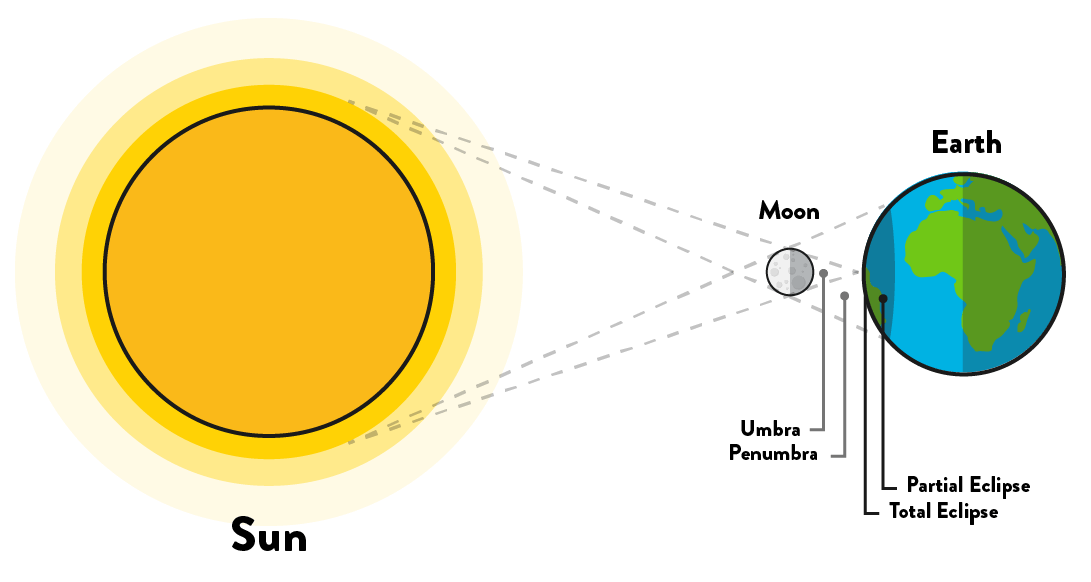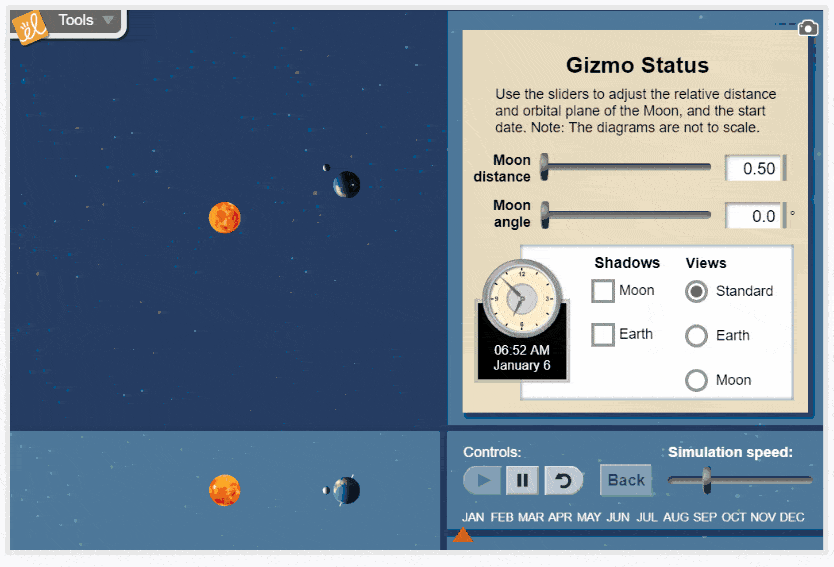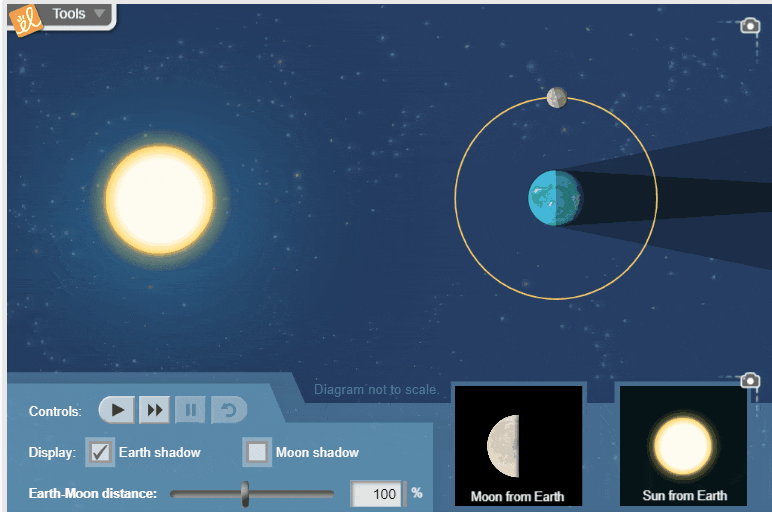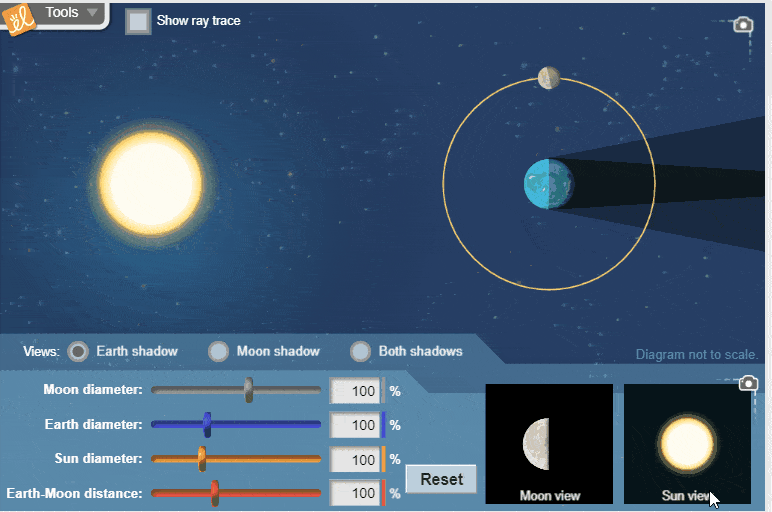
Are you ready for it? The solar eclipse is coming! On April 8, a total solar eclipse crossing Central and North America will occur.
What is a solar eclipse? Exploring the celestial spectacle
A solar eclipse happens when the Moon passes between the Sun and Earth, casting a shadow on Earth. Depending on the alignment, the Sun’s light is wholly or partially blocked in some areas. This is why the sky gets darker in the middle of the day during a solar eclipse. A total solar eclipse happens when the Moon passes between the Sun and Earth at precisely the right moment, blocking all of the Sun’s light and making the day look like nighttime.

Shedding light on solar eclipse occurrences
How often do solar eclipses occur? There are 2-4 solar eclipses per year on the Earth, usually covering an area of ground approximately 50 miles wide. Total solar eclipses happen about once every one or two years. However, at any given location, a total eclipse could happen a few years apart or once in a hundred years. The area of total darkness during an eclipse, the result of a trail created by the Moon’s shadow as Earth rotates, is called the path of totality.
Why does the 2024 eclipse stand out, and what is the path of it?
Why is the 2024 eclipse such a big deal? The 2024 solar eclipse path is unique because millions live in the path of totality. Compared to the 12 million people in the 2017 eclipse, approximately 31.6 million people live where it will easily be seen. That path will also be a bit wider.
Where is the best place to see the 2024 solar eclipse? The Moon’s shadow will pass over the middle of North America, from Mexico to Canada. Many major cities are located along the path, including Durango, San Antonio, Austin, Dallas, Little Rock, Indianapolis, Cleveland, Buffalo, and Burlington, Vermont.
A teacher’s guide to planning for the solar eclipse
Are you looking for exclusive Eclipse information to prepare lessons? There’s a free ExploreLearning webinar just for you! Registration is easy. Find the date and time that works for your schedule and sign up. Webinar attendees will be entered into a drawing for a classroom set of 25 ExploreLearning Solar Eclipse Glasses. Twenty lucky participants will win!
How do you teach solar eclipses? Start with a solar eclipse lesson that explains what happens when the Moon blocks the Sun. Discuss what can be seen during an eclipse and the safety aspects of viewing. Involve students in solar eclipse activities that make learning fun!
- Create paper models. Use black construction paper and orange and yellow paint. Students can paint the movements of the Earth, Sun, and Moon, or even the path of totality for the upcoming eclipse.
- Play "Sun, Sun, Moon." Think "Duck, Duck, Goose," but in this version, the Moon chases the Sun and yells "Total Eclipse!" when the Moon catches the Sun.
- Commemorate the event with a Time Capsule. Because this eclipse will be a once-in-a-lifetime experience for most, savor the memories of the moment. Ask students to write about current events and draw pictures of what the world was like at the time of the eclipse. Be sure to include specifics about the eclipse itself, such as a map of the path of totality.

How to safely view the solar eclipse
Safety is the number one consideration for viewing the solar eclipse. Whether it’s the partial phases before and after the eclipse or the moment of totality, you must have “eclipse glasses” or a safe handheld solar viewer made for protected viewing. Make sure your eclipse glasses or viewer are not scratched, torn, or damaged. If young children are viewing the eclipse, supervise them carefully.
Regular sunglasses are NOT safe, regardless of the darkness of the lenses. The same goes for a camera lens, telescope, binoculars, or any other optical device while wearing eclipse glasses or using a handheld solar viewer. Concentrated solar rays will burn through the filter, causing serious eye injury. Seek expert advice if you have questions about viewing the eclipse safely.
Teach the solar eclipse to students year-round with Gizmos

Prepare your students for the eclipse or follow up the actual event with the 3D Eclipse Gizmo, designed for middle and high school students. Students learn why eclipses, especially solar eclipses, are so rare. The 3D Eclipse Gizmo illustrates this because the Moon’s orbit is tilted relative to the plane of the Earth’s orbit, the Moon usually goes above or below the Earth’s shadow, while the Moon’s shadow usually passes above or below Earth. There are only a couple of times a year when the conditions are right for an eclipse.
3D Eclipse GizmoDeliver interactive simulations with Gizmos for the eclipse and so much more. A list of virtual simulations dealing with this topic includes Eclipse, 3D Eclipse, and 2D Eclipse.

The Eclipse Gizmo is designed primarily for elementary grade use (especially grades 3 - 5).
Students observe solar and lunar eclipses as the Moon orbits Earth. Look for the new Elementary Literacy Connection for this Gizmo for cross-curricular activities.
Eclipse Gizmo
The 2D Eclipse is meant for middle and high school students. Students manipulate the position of the Moon to model solar and lunar eclipses and view Earth's shadow, the Moon's shadow, or both.
2D Eclipse GizmoIf you are lucky enough to be in the path of totality this April, enjoy the once-in-a-lifetime experience! (Just don’t look directly at the eclipse unless you have specialized equipment.)

The Eclipse, 3D Eclipse, and 2D Eclipse Gizmos are part of our rotating collection of Free Gizmos. All it takes is a trial to keep Gizmos in your classroom.
Start My Trial